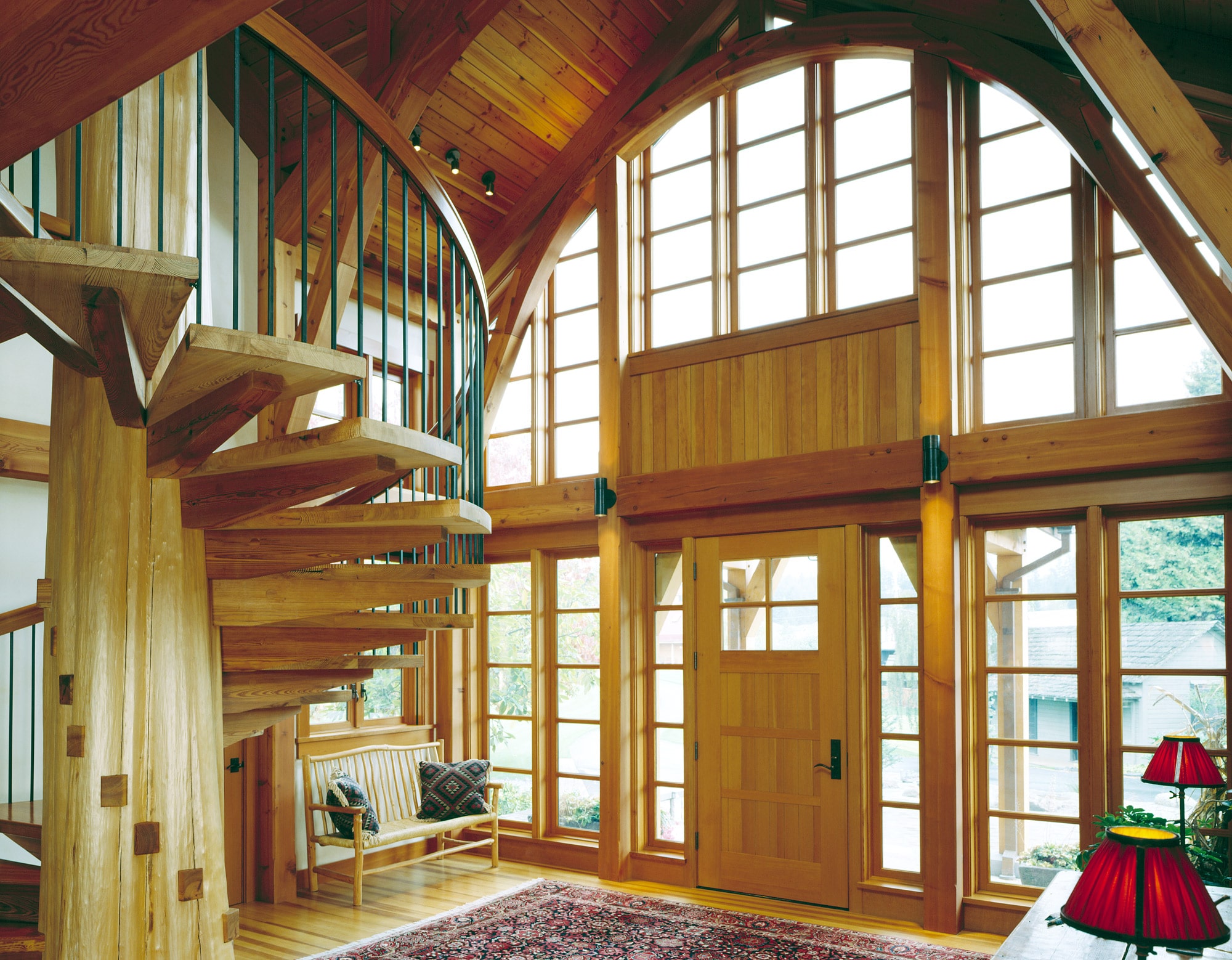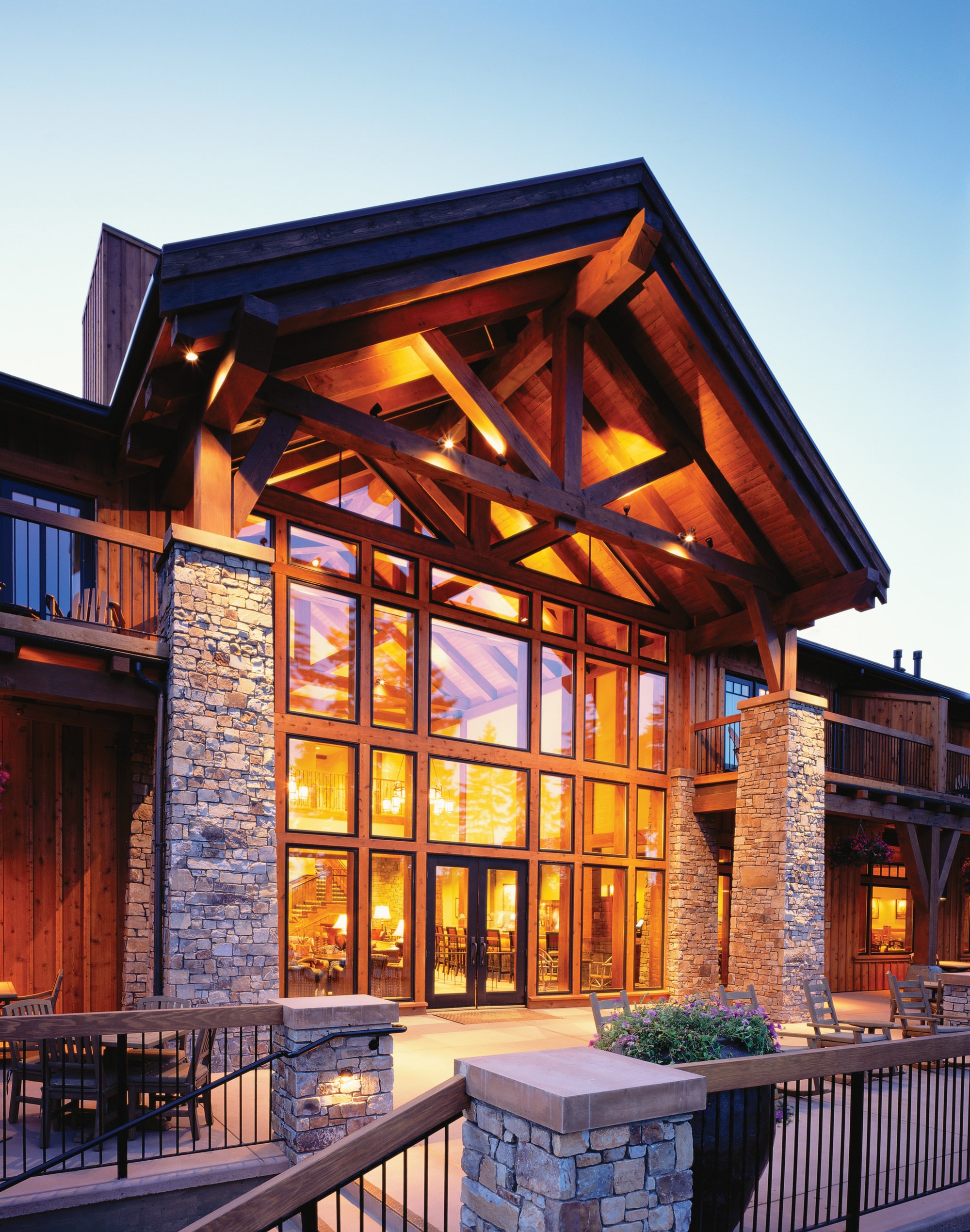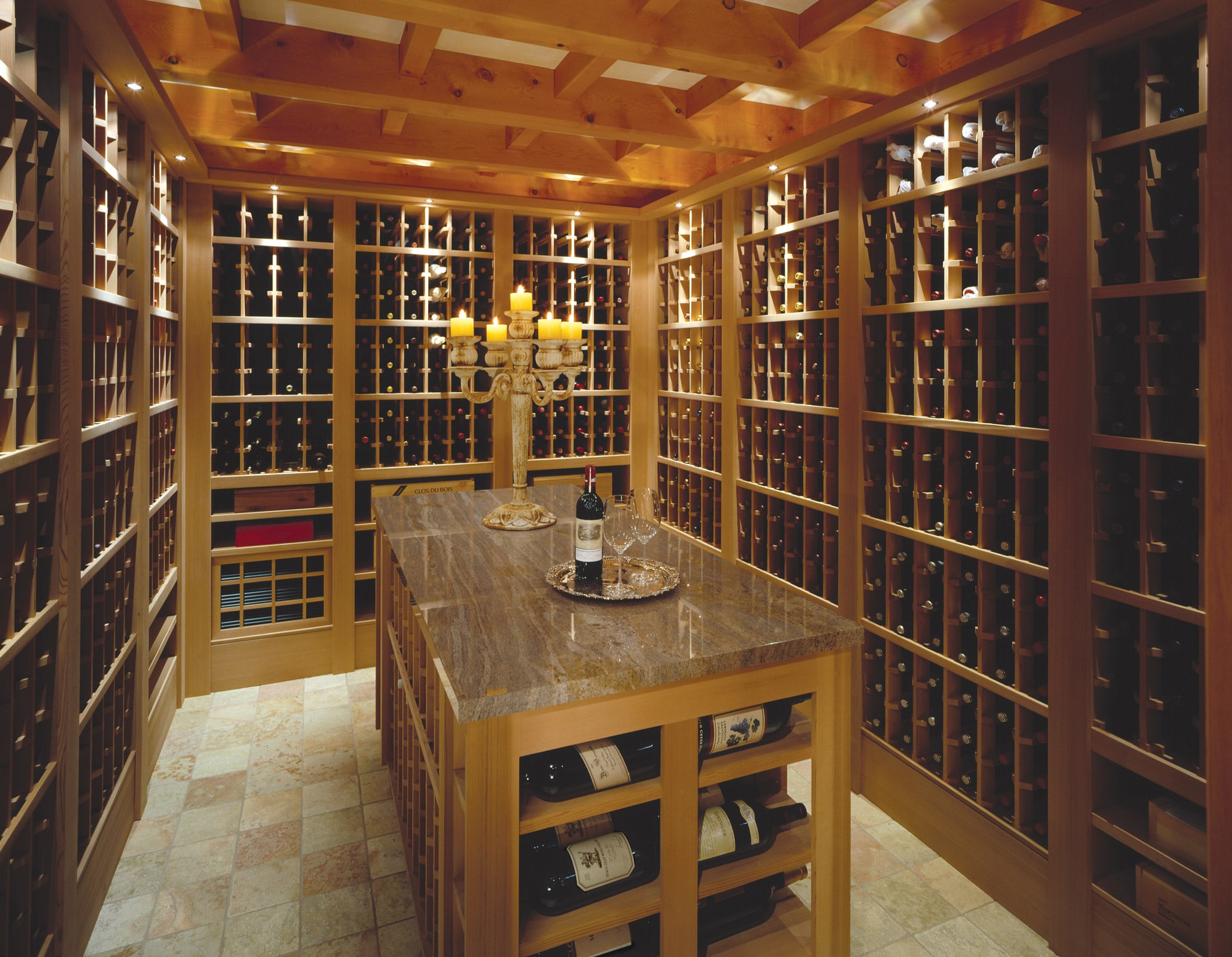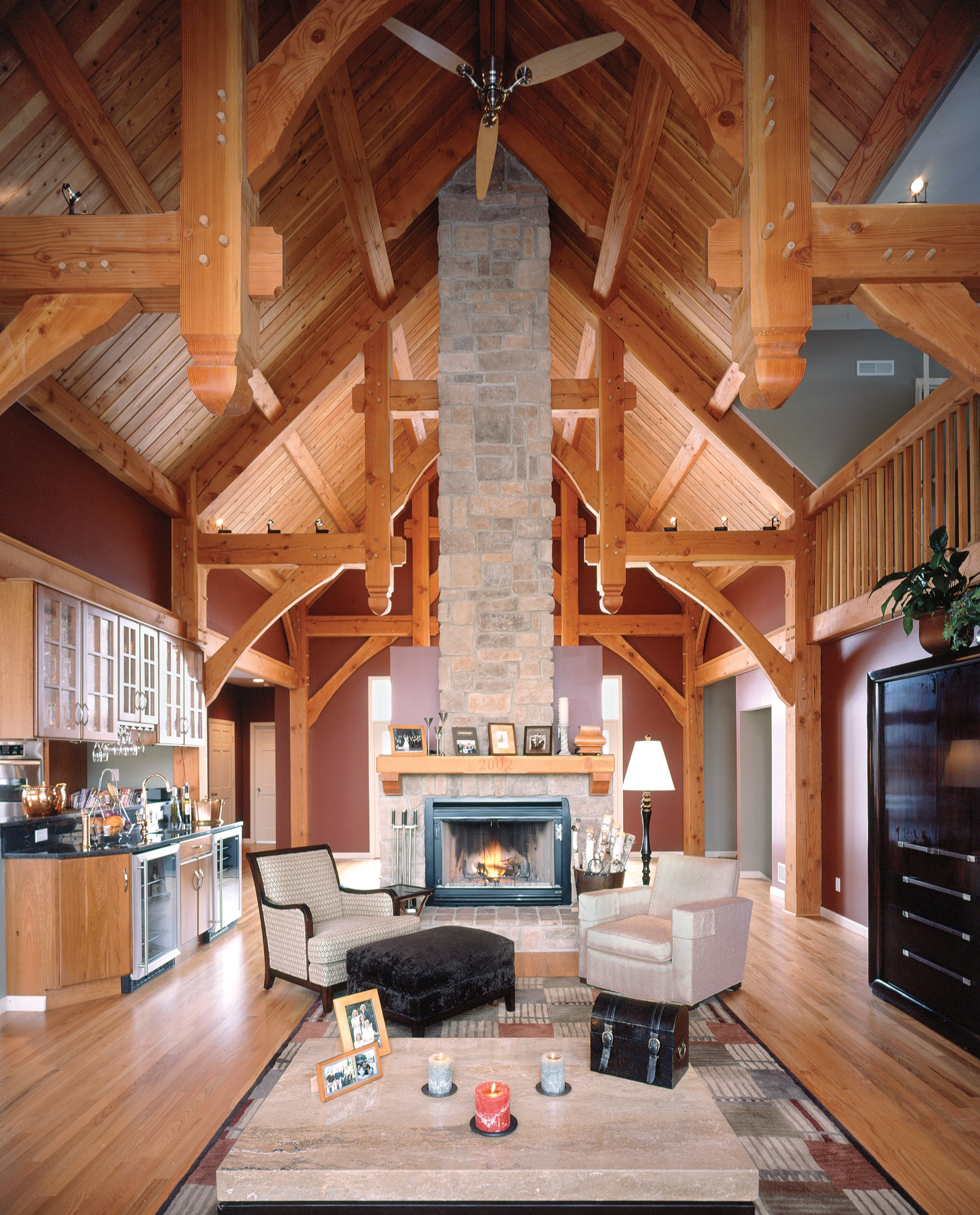
Timbercraft homes can typically be framed in days, as each piece of timber is designed, engineered, and test-fitted at the factory. [Photo: Courtesy of Timbercraft]
The best design strategies start with some of the very finest wood.
Timber framing, an ancient artisan craft, brings the beauty of wood to life in a dramatic way, and Tecumseh, Michigan–based Timbercraft has perfected the art.
During the nearly two decades Bob Sternquist has owned Timbercraft, a company founded in the late ’70s, his team has crafted roughly 1,500 timber frame homes in the United States and abroad. While many of those projects stand out in his mind, one in Pagosa Springs, Colorado, is particularly memorable.
The clients asked Timbercraft to help honor their late father, who had a lifetime love for old-fashioned timber frame barns and always dreamed of having a timber frame home of his own. Sadly, he passed away before realizing that dream. As a tribute, his kids wanted to build a large timber frame vacation home for the whole family to enjoy.
Timbercraft did just that, sending its staff of experts to design and assemble a house that met the client’s exact specifications. The reaction is what Sternquist recalls most vividly. “On that job, while the frame began to take shape against the backdrop of the Colorado Mountains, tears flowed as the clients brought their father’s dream to life,” he says. “They were hugging and excited, I was almost in tears myself.”
FROM OUR NOVEMBER+DECEMBER 2017 ISSUE
The preferred publication of leading green professionals.


[Photos: Courtesy of Timbercraft]
Wooden structures stand out both visually and functionally. Timbercraft most often uses responsibly forested Douglas fir from Oregon, and the results are impressive—whether the client has commissioned a simple and moderately priced cottage or an intricate multimillion-dollar showpiece like one Sternquist erected in Aspen.
“The beauty of it is just absolutely unique,” says Sternquist, whose own home is a partially timber framed structure set on 30 acres. “It is so warm and inviting. I love coming home at dusk. I have lights that shine upward to accent the frame and bring the drama of my wood ceiling to life. I totally dig my house.”
But timber framing, a style of construction that goes back thousands of years, is more than just aesthetically pleasing—far more.
Timbercraft homes, whether modest or grand, can usually be framed in a matter of days. Because every piece of timber is designed, engineered, and test-fitted at the company’s Michigan factory, the erection process is streamlined when the wood arrives on-site.
Timbercraft structures are three times stronger than conventional “stick-built” structures. The timber frame is joined with kiln-dried oak pegs in the traditional “mortise and tenon” method, or with metal fasteners (“post-and-beam”) that can better withstand heavy snow loads and earthquakes. And contrary to common belief, it’s all extremely fire resistant. Conventional structures burn quickly once the flames find wall studs. Timber framing uses solid wood, which requires tremendous heat to burn.
Timber framing also offers major ecological advantages. Not only does it use 80% less wood than conventional stick-built structures, it is far more energy-efficient. According to Sternquist, Timbercraft’s materials and methods result in energy efficiency that is six times greater. So even though a timber frame project typically will cost around 20% more, backend savings eventually make up for the additional outlay—and then some.


[Photos: Courtesy of Timbercraft]
“I don’t want to design a home where your furnace is going to turn on every 10 or 15 minutes,” Sternquist says. “I want better efficiency, so there’s a more even heat throughout the house. I kiddingly say we’re trying to design a structure that can be heated with a candle.”
Or kept cool with minimal air-conditioning. The secret is Timbercraft’s Structurally Insulated Panels (SIPs). Made with polyurethane, they help keep temperatures constant by blocking the exit of hot air through walls and ceilings and better containing cold air.
“The reason it’s a happy marriage for timber frames and SIPs is that timber frames are these tall, vaulted structures in desperate need of energy efficiency,” Sternquist says. “But SIP panels need structural lumber to sit on. So both products need each other.”
Whether prospective buyers are in the market for a fully timber framed home, commercial, or outdoor space, a hybrid that deploys timber framing only in high-traffic areas, or a simpler cosmetic enhancement that Sternquist dubs “trimber framing,” Timbercraft offers options to suit a wide range of budgets and tastes. But they all have one thing in common: gorgeous, long-lasting, handcrafted wood.
“Part of the reason people come to Timbercraft is we’re building a legacy,” Sternquist says. “It’s a beautiful piece of art.”
One that might just bring a tear to your eye.
The Numbers
-
1,500 homes crafted
-
40 years in business
-
3 Timber frame structures are three times stronger than conventional stick-built structures
-
80 percentage less wood used compared to conventional stick-built structures
-
6 Timbercraft’s structures are six times more energy efficient than others
Learn more about Timbercraft and catch up on other timber stories from gb&d.


